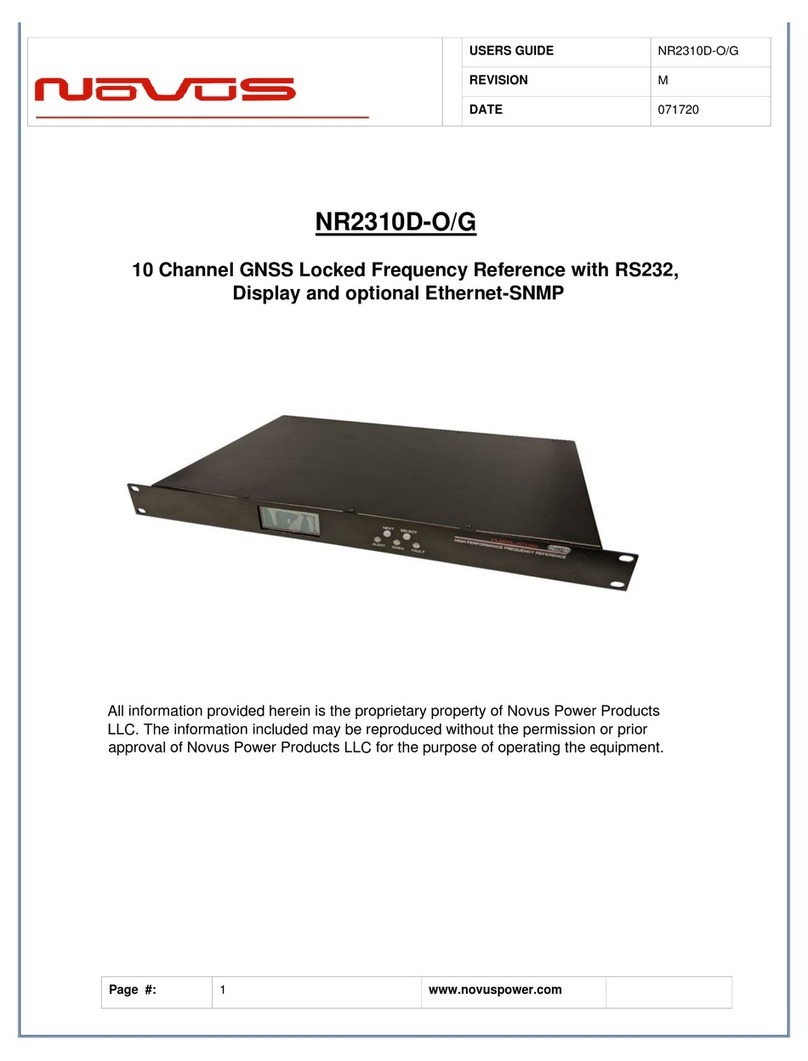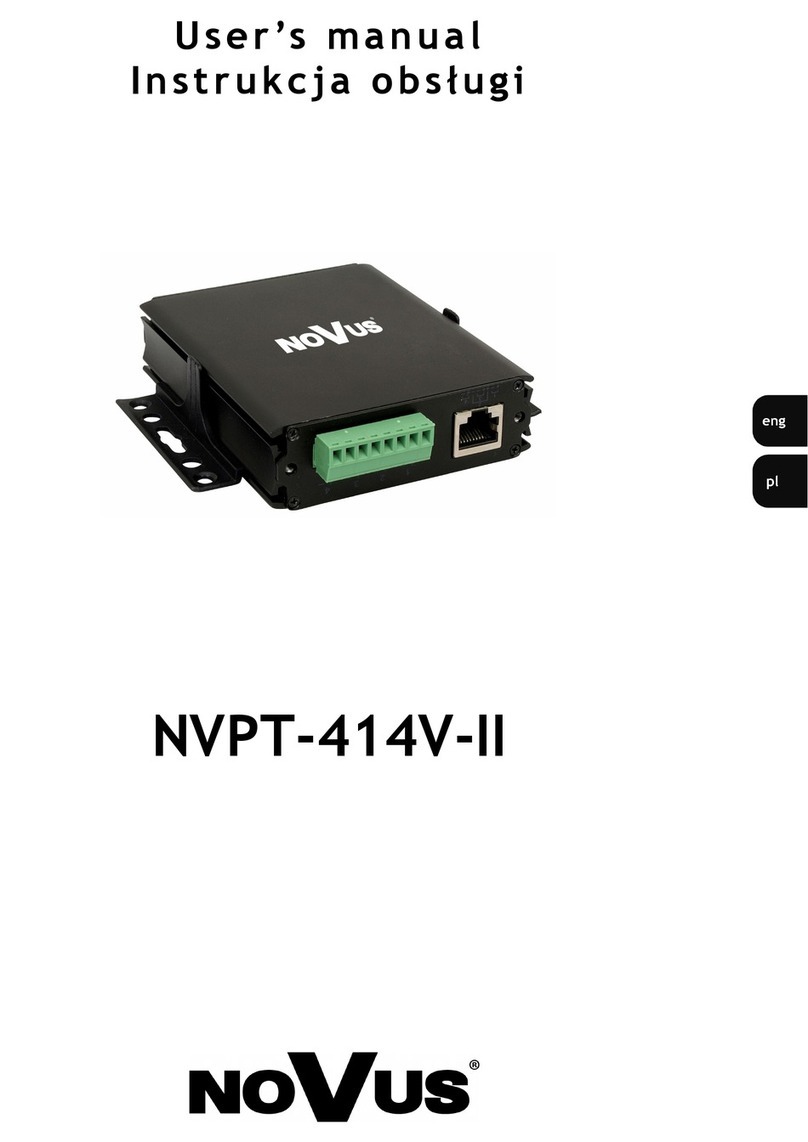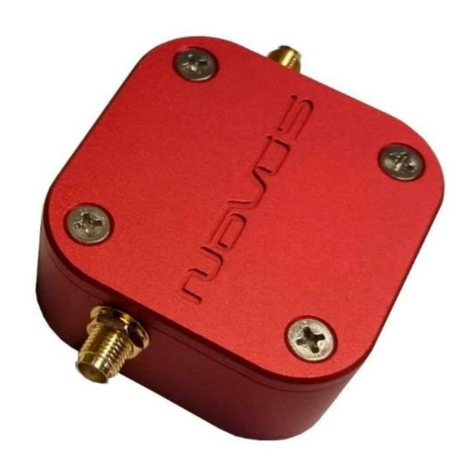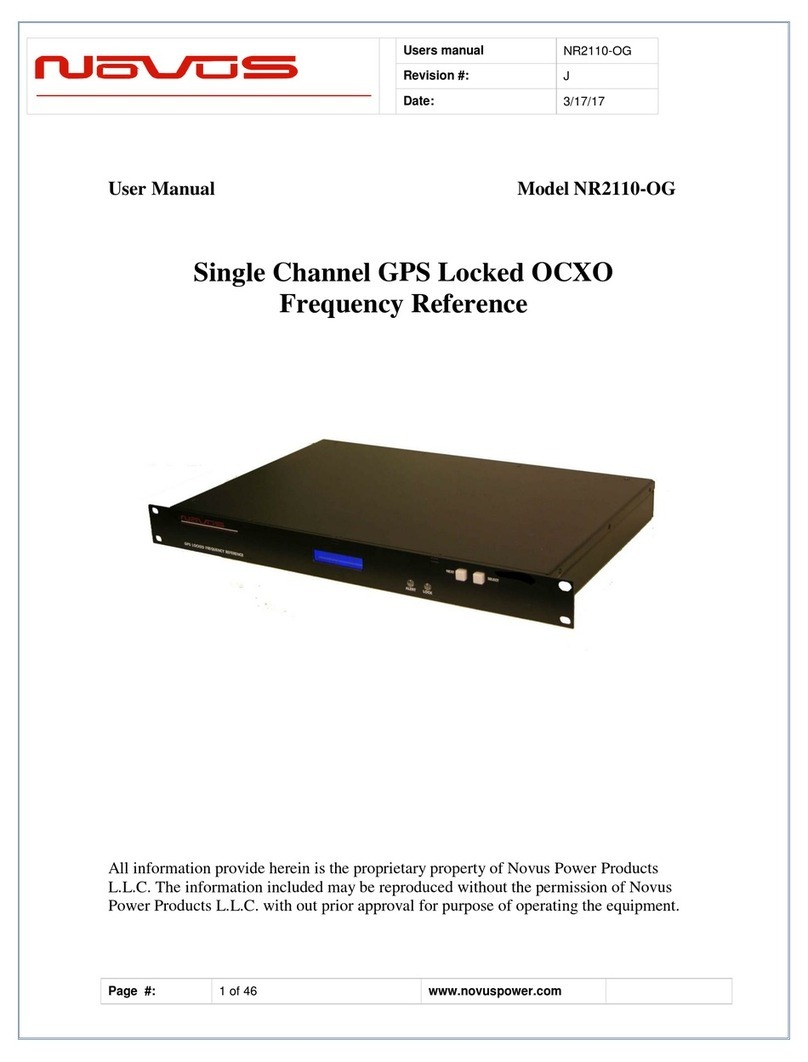To get a useful frequency reference, the jitter (phase noise) of the frequency reference
must be improved. A very low bandwidth phase locked loop is used to lock a high
performance 10 MHz OCXO to the synthesized disciplined 10 MHz. By virtue of having
a very low bandwidth, the high frequency jitter is dramatically reduced. There are
numerous tradeoffs - speed of acquisition, phase error, stability, cost, etc. It is a
complex feedback loop and as such, there are many solutions. Noise on the final
output is also affected by the noise in the system. Noise from power supplies and other
circuits can easily sum with the output signal. Care has been taken throughout the
design to achieve a high quality signal.
The phase noise of the output is now largely dominated by the voltage controlled
oscillator. The oscillator is typically a crystal oscillator and the quality of that device can
vary significantly. The NR3700-CAL uses an oven-controlled oscillator to provide an
unlocked stability of under 50 ppb/year.
The calibration feature continually monitors the correction coefficients developed
through GPS timing information. These are sampled multiple times per day and stored
in non-volatile memory and in the event of a GPS loss, the saved coefficients are
applied to the TCXO. This effectively eliminates long-term crystal drift.
The NR3700-O/G also incorporates built-in test to monitor critical parameters such as
the TCXO, power supplies and other functions. The built-in test drives a front panel
indicator.
The GPS lock status is also provided by a front panel indicator and a signal accessible
on the front panel DB-9. Many systems will use this signal to detect a long-term GPS
loss-of-lock state which may be caused by an antenna or cabling issue.
The NR3700-O/G draws less than 10 Watts of power from a 12 VDC nominal source.
An AC power adapter is available as an option to allow direct operation from standard
AC power. Also, Novus offers related NR3700 products that can operate anywhere from
–60 to +60 VDC. Contact the factory for further details.





































